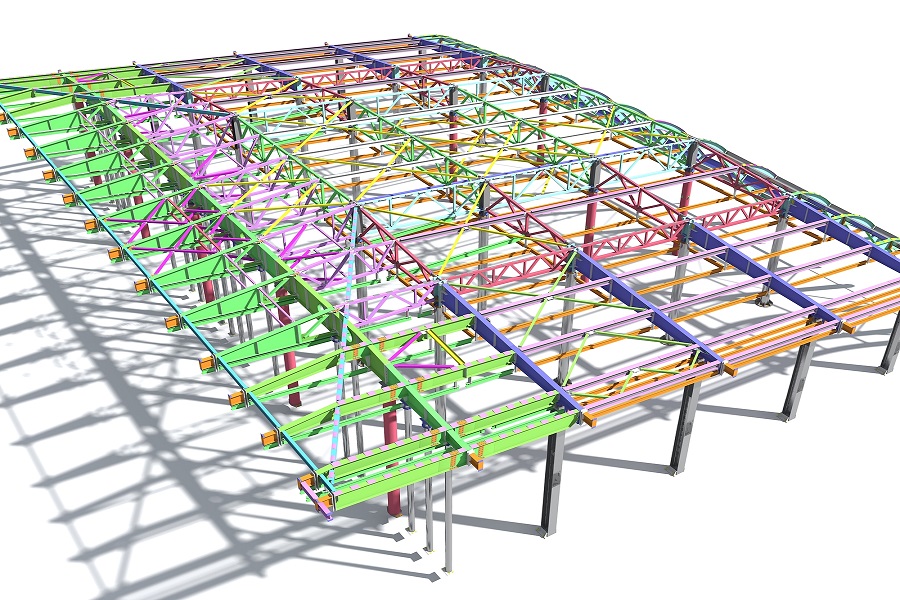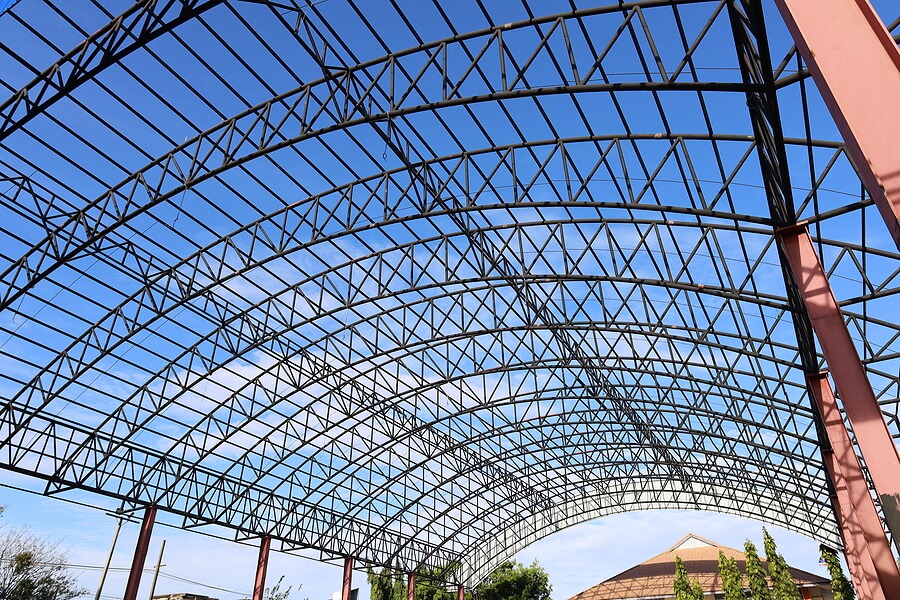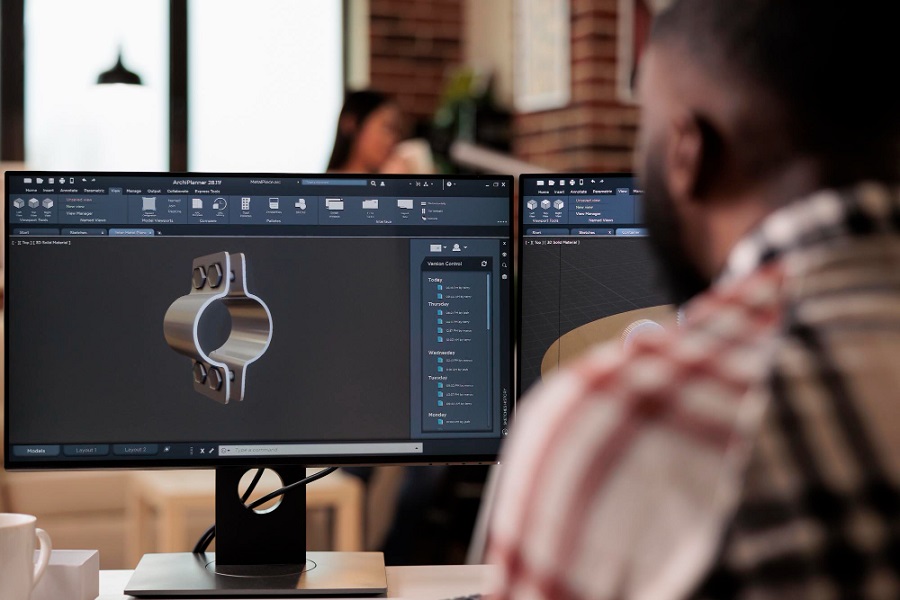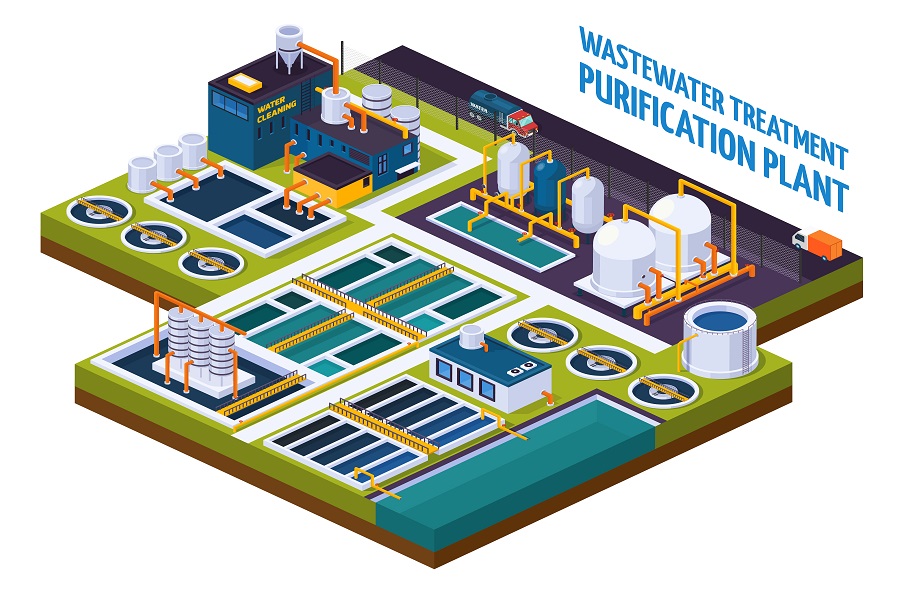When we think of building iconic skyscrapers, soaring bridges, and robust industrial facilities, one material that comes to our mind and is of prime importance is – Steel. Renowned for its strength, durability, and versatility, steel plays a vital role in modern construction.
From supporting massive loads to withstanding extreme weather conditions, steel structures offer unparalleled stability and longevity. However, behind the scenes of these awe-inspiring structures lies a critical process that ensures their precision and safety, and that process is known as Steel Detailing.
In the world of construction, steel detailing is the meticulous art of translating architectural and engineering designs into comprehensive plans for steel fabricators. It involves creating detailed drawings, specifications, and instructions that guide the fabrication, assembly, and erection of steel components. From intricate connections to accurate dimensions, every detail is meticulously documented to ensure the seamless integration of steel into the overall construction project.

Whether it’s a towering commercial skyscraper or a sprawling residential complex, structural steel detailing is an indispensable part of the construction process. It bridges the gap between design and execution, transforming conceptual visions into tangible steel structures that stand the test of time.
Let’s delve deeper into the world of steel detailing, uncover its significance in construction projects, and discover how it contributes to the successful completion of remarkable buildings that shape our urban landscapes. So, join us on this journey and explore the vital role steel drafting and detailing play in bringing architectural visions to life.
What is Structural Steel Detailing?
Structural steel detailing is the process of translating structural designs into comprehensive and precise drawings that guide the fabrication and installation of steel components in construction projects. It involves creating detailed drawings and plans that serve as a roadmap for fabricating and constructing steel structures.
The process involves the utilization of specialized tools and software to create 2D and 3D models, views, and drawings that include all the necessary information for fabricating steel components. This includes dimensions, connection details, material specifications, weld symbols, bolt patterns, and other crucial details required for proper construction.

In it, structural steel detailers work in close association with architects, engineers, and contractors to ensure that the steel components are accurately represented and properly integrated into the overall design as well as in the construction process of buildings, bridges, industrial structures, and other steel-based projects.
The Structural Steel Detailing Process: From Concept to Construction
The process of structural steel detailing involves several key steps:
- Initial Project Analysis: The detailing process begins with a thorough analysis of the project requirements, specifications, and structural designs. This analysis helps the detailer understand the project scope, constraints, and specific design considerations.
- Creation of Detailed 2D and 3D Drawings: Using specialized software such as Tekla, Advance Steel and AutoCAD, the detailer creates comprehensive 2D and 3D drawings. These drawings provide a visual representation of the steel components, including columns, beams, braces, connections, and other structural elements.
- Generation of Shop Drawings: Detailed shop drawings are then created to provide fabricators with precise instructions for manufacturing the steel components. These drawings include information on dimensions, material specifications, connection and welding details, and assembly instructions.
- Incorporation of Material Specifications: Steel detailing involves specifying the type and grade of steel to be used, along with the necessary connections and fasteners. This information ensures that the fabricated steel components meet the required strength, durability, and performance standards.
- Coordination with Architects, Engineers, and Contractors: Structural steel detailers then collaborate closely with architects, engineers, and contractors to ensure that the steel components align with the overall project design and meet the structural requirements. This coordination helps to resolve any design conflicts or discrepancies and ensures seamless integration of the steel elements into the construction project.
- Revision Management: Steel detailing is an iterative process that involves constant review, feedback, and revision. Detailers work closely with project stakeholders to incorporate changes, address design modifications, and accommodate site-specific requirements. Effective revision management ensures that the final detailing drawings are accurate and up to date.
Types of Structural Steel Detailing
The type of steel detailing varies on the level of detail, the scope of work, and the specific requirements of the project. Some common types of structural steel drawings include:
- General Arrangement Drawings (GAD): General Arrangement Drawings provide an overall view of the steel structure, including the layout, dimensions, and positioning of major components. GADs typically include information on columns, beams, bracing, and connections and help in providing a comprehensive overview of the structure.
- Steel Shop Drawings: Structural Steel Shop drawings provide detailed information on individual steel components, such as columns, beams, trusses, and connections. These drawings include precise dimensions, material specifications, weld details, and other relevant information. These drawings are used by fabricators for the fabrication and assembly of steel components.
- Connection Design: Connection design involves the detailing of connections between different steel members. This includes determining the type of connection, selecting appropriate fasteners, specifying welding details, and ensuring the structural integrity and load transfer between components. Connection design is crucial for the overall stability and strength of the steel structure.
- Steel Reinforcement Detailing: Also known as Rebar Detailing, it focuses on the detailing of reinforcing bars (rebars) used in reinforced concrete structures. It includes the layout, spacing, bending, and placement of rebars, as well as the development of bar schedules and bending diagrams. Reinforcement detailing ensures that the concrete structure can withstand the intended loads and provides the necessary strength and durability.
- Erection Drawings: Erection drawings are indispensable in the construction of steel structures. These detailed drawings provide essential guidance to steel erectors for the precise placement, alignment, and assembly of steel components. By translating design intent into practical instructions, erection drawings facilitate efficient construction processes, promote the safety and integrity of structures, ensure timely clash detection, and foster effective communication and collaboration among stakeholders.

The Importance of Steel Detailing in Construction Projects?
Structural steel detailing plays a crucial role in construction projects. It helps in
- Accurate Fabrication: Steel fabrication drawings provide fabricators with precise information about dimensions, connections, and specifications. This accuracy ensures that steel components are manufactured to the exact requirements of the project, reducing errors and improving overall quality.
- Efficient Assembly: Structural steel detailing includes assembly instructions and sequencing plans, guiding the installation process. This enables efficient and streamlined assembly on-site, and helps in saving time and minimizing disruptions during construction.
- Structural Integrity: Steel structures require precise connections and detailing to ensure their structural integrity and safety. Steel detailing identifies critical connection points, load-bearing members, and required reinforcements, ensuring that the structure meets the necessary strength and stability standards.
- Clash Detection: Through advanced 3D BIM modeling and clash detection tools, structural steel detailing helps in identifying clashes or conflicts between steel components and other building elements, such as mechanical, electrical, and plumbing systems. This allows for early detection and resolution of design clashes, minimizing rework and costly on-site errors and modifications.
- Material Optimization: Steel detailing optimizes the use of steel materials, reducing waste and cost. Accurate quantity take-offs and material specifications help in minimizing material excess and ensuring cost-effective procurement.
- Coordination and Collaboration: Steel detailers work closely with architects, engineers, and contractors to ensure coordination between various disciplines. They address design conflicts, resolve issues, and collaborate to achieve an integrated and cohesive construction project.
- Compliance and Code Adherence: Steel detailing ensures that the construction project complies with relevant building codes, industry standards, and regulations. Detailers incorporate specific requirements and specifications into the drawings, ensuring that the steel components meet the necessary quality and safety standards.
- Cost and Time Savings: Efficient steel detailing can lead to significant cost and time savings in construction projects. Accurate material estimation, minimized rework, and enhanced coordination among project stakeholders contribute to the overall project efficiency, reducing project timelines and costs.
Software and Technologies Used for Steel Detailing
Traditional steel detailing involved manual drafting using paper and drafting tools – something that was both time-consuming and prone to errors and mistakes. But not anymore. Today, structural steel detailing relies on various modern computer-aided design (CAD) software and 3D Building Information Modeling tools that aim to enhance accuracy, efficiency, and collaboration in the detailing process. Some of the most commonly used tools and technologies in steel detailing services include:
Tekla
Developed by Trimble, Tekla is a widely used CAD software for structural steel drawing and detailing. With its comprehensive features and integration with BIM systems like Revit, it facilitates the entire design process from concept to completion.
AutoCAD
Another powerful CAD software that’s used for creating 2D and 3D architectural drawings with accuracy. While it lacks the advanced capabilities of Tekla in steel detailing, it serves as a valuable tool for 2D designs, especially in mechanical, electrical, and plumbing (MEP) components. It also assists in converting paper drawings to CAD models.
Revit
Revit is a powerful CAD software known for its multidisciplinary BIM platform. It excels in structural steel drawings and offers advanced modeling features for complex shapes and intelligent data storage. Despite its complexity and higher licensing costs, its powerful capabilities and high-quality designs make it a preferred structural steel modeling software.
Advance Steel
Designed by Autodesk, Advanced Steel is a specialized software for steel detailing, fabrication, design, and construction. It automates repetitive tasks, provides parametric steel connections, and offers seamless collaboration with Revit through a bi-directional link, saving businesses valuable time.
Solidworks
Developed by Dassault Systems, Solidworks is widely recognized for its 2D to 3D CAD conversion capabilities. It serves as an effective tool for transforming paper drawings into workable 3D CAD designs. Although Solidworks has a straightforward interface, it can be costly for businesses to implement.
While all the steel detailing software mentioned above have its own strengths and applications, choosing the right tool depends on the specific requirements and budget of the project.
Outsource Steel Detailing Services to Make the Most of Technology
Software and technologies used in structural steel detailing come with a price. The advanced CAD software, BIM platforms, and specialized tools required for accurate and efficient steel detailing often require an investment; the licenses and subscriptions for these software and technologies add to the overall expenses. To make the most of technology, it is best to outsource structural steel detailing services to professional service providers.
By partnering with an experienced steel detailing service provider, businesses can not only gain instant access to the latest CAD and BIM software and technologies, they can also benefit from the specialized knowledge and efficiency of dedicated professionals who have years of experience and expertise in providing structural steel drafting services. Some of the other advantages of outsourcing structural steel detailing services include:
- Significant Cost and Time Saving: Instead of investing in expensive software licenses, training, and infrastructure, by outsourcing you can leverage the expertise of professional firms that already have the necessary tools and resources in place. They can not only help you save money on costly software purchases but can also help you complete projects more efficiently, saving you valuable time. They are well-versed in utilizing the latest software features and techniques, enabling faster turnaround times without compromising on quality.
- Unmatched Scalability and Flexibility: Outsourcing allows you to scale your steel detailing requirements based on project demands. Whether you have a small-scale project or a large complex structure, outsourcing firms adapt to your needs and provide the required resources and manpower as per your changing project demand.
- Seamless Collaboration and Communication: Professional outsourcing firms have well-established processes in place. They work closely with you to understand your project specifications, provide regular updates, and address any queries or concerns promptly for hassle-free collaboration and communication.
- Quality Assurance: Outsourcing firms prioritize quality and accuracy in their deliverables. Their expertise and attention to detail ensure that your steel detailing is precise, compliant with industry standards, and meets your project requirements.
- Risk Mitigation: By outsourcing steel detailing services, you can mitigate risks associated with errors, design flaws, and construction delays. Expert professionals use their experience and knowledge to identify potential issues early on, allowing for timely resolutions.
- Focus on Core Competencies: Outsourcing steel detailing frees up your internal resources, allowing your team to focus on core competencies and other crucial aspects of the project. This improves overall productivity and efficiency within your organization.
So, partner with experienced service providers and maximize the benefits of technology while minimizing financial burdens, improving project outcomes, and increasing project profitability.
The Bottom Line
Structural steel detailing plays a vital role in the success of construction projects. By utilizing advanced software and technologies, businesses can achieve greater precision, efficiency, and cost-effectiveness in their steel detailing processes. Whether it’s creating detailed 3D models, generating accurate shop drawings, or ensuring seamless collaboration with architects and engineers, the right tools can make a significant difference. So, if you’re looking to leverage the power of technology in your steel detailing endeavors, consider partnering with a trusted steel detailing service provider like Enginerio. With our expertise, experience, and access to cutting-edge technologies, we can help you achieve exceptional results and take your projects to new heights. Contact Enginerio today to discover how our steel detailing services can benefit your construction ventures.






